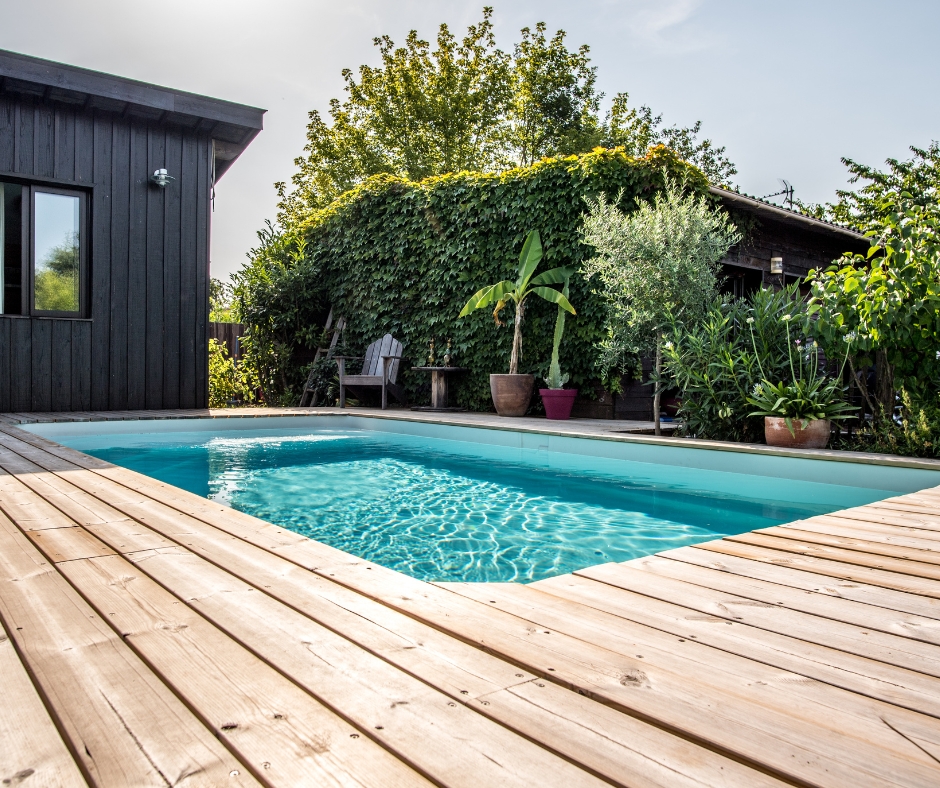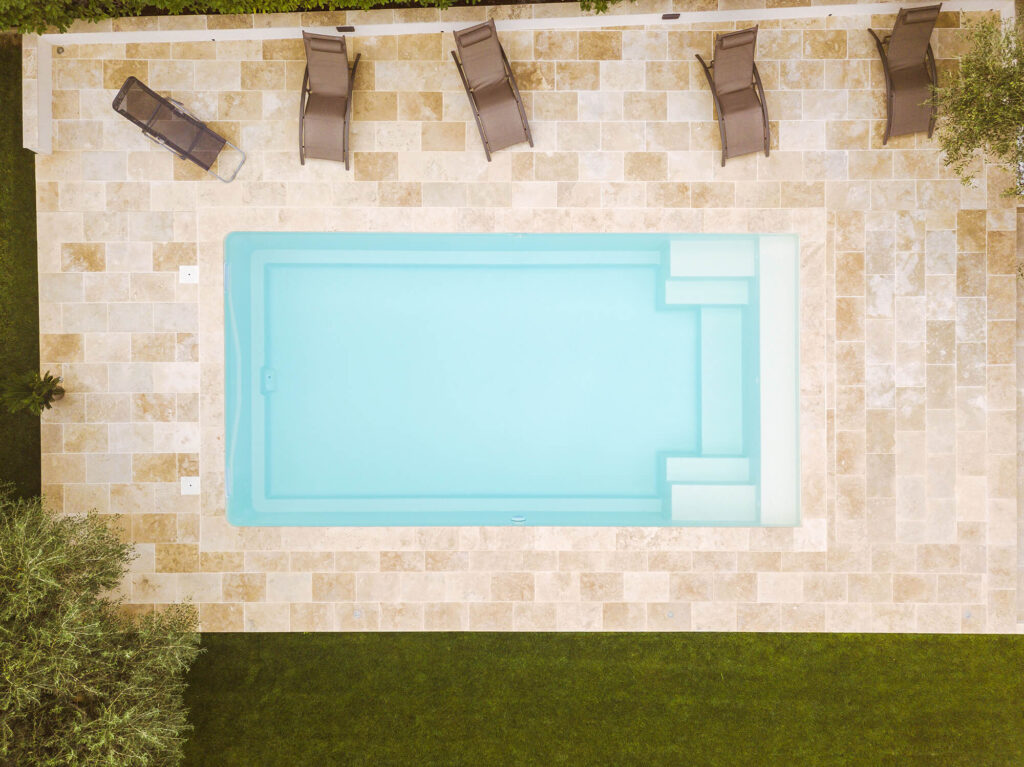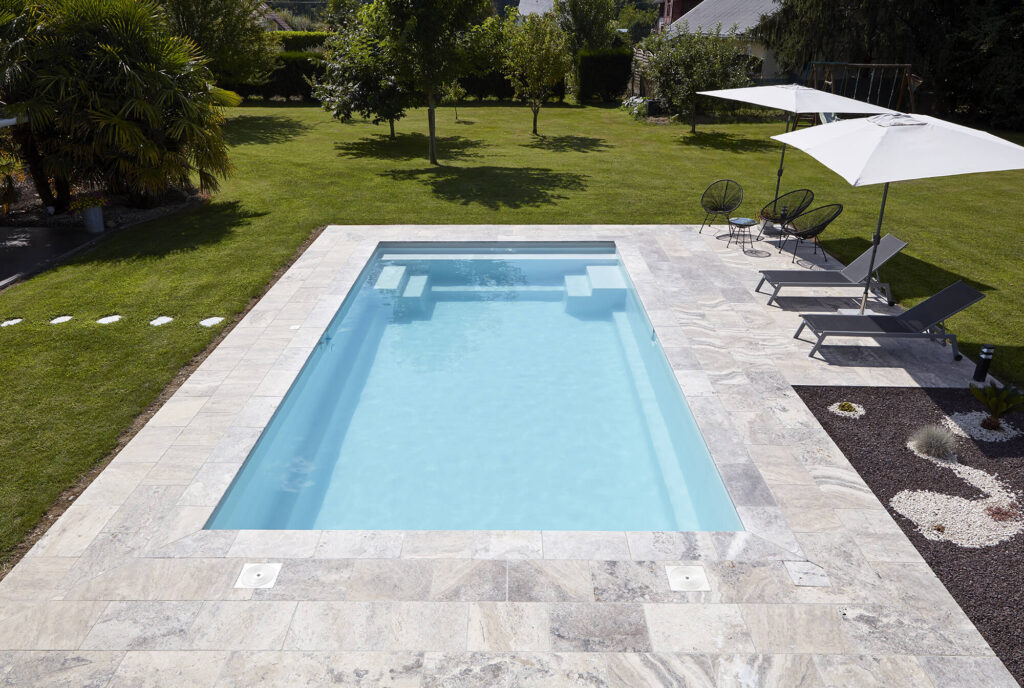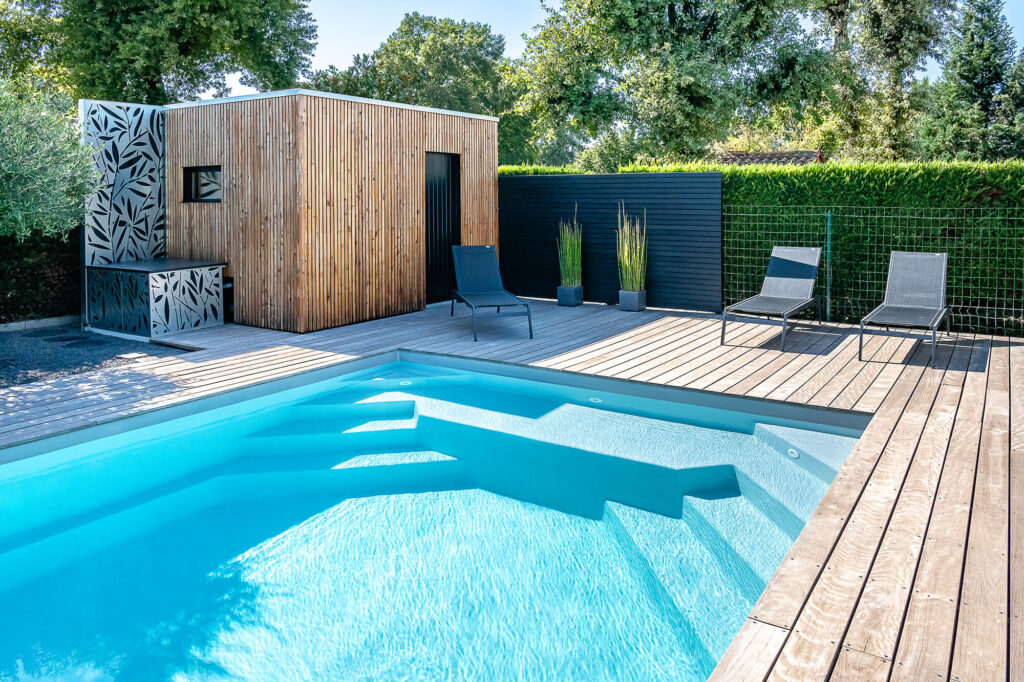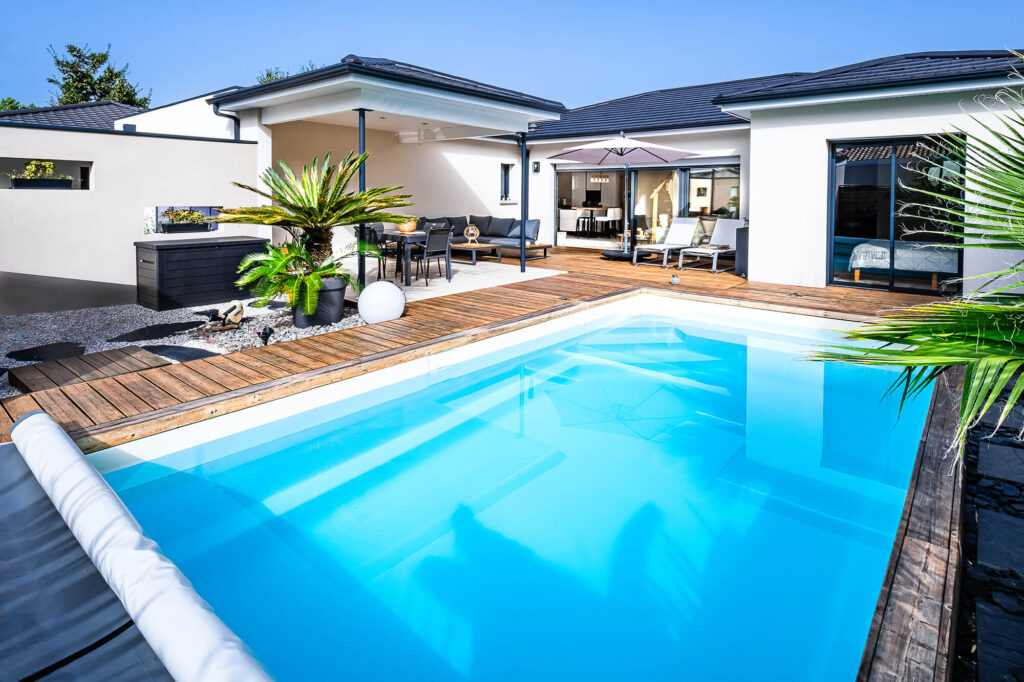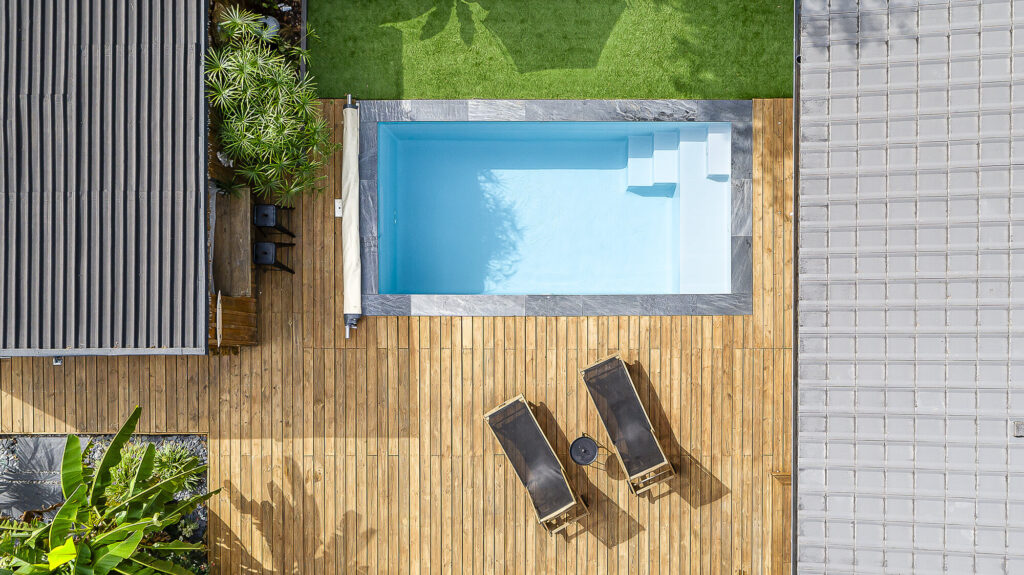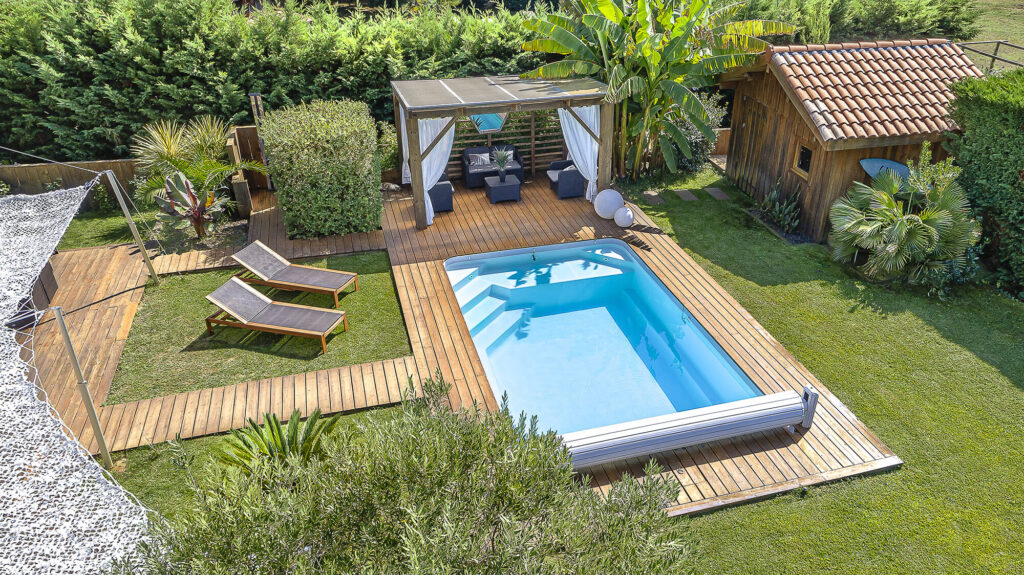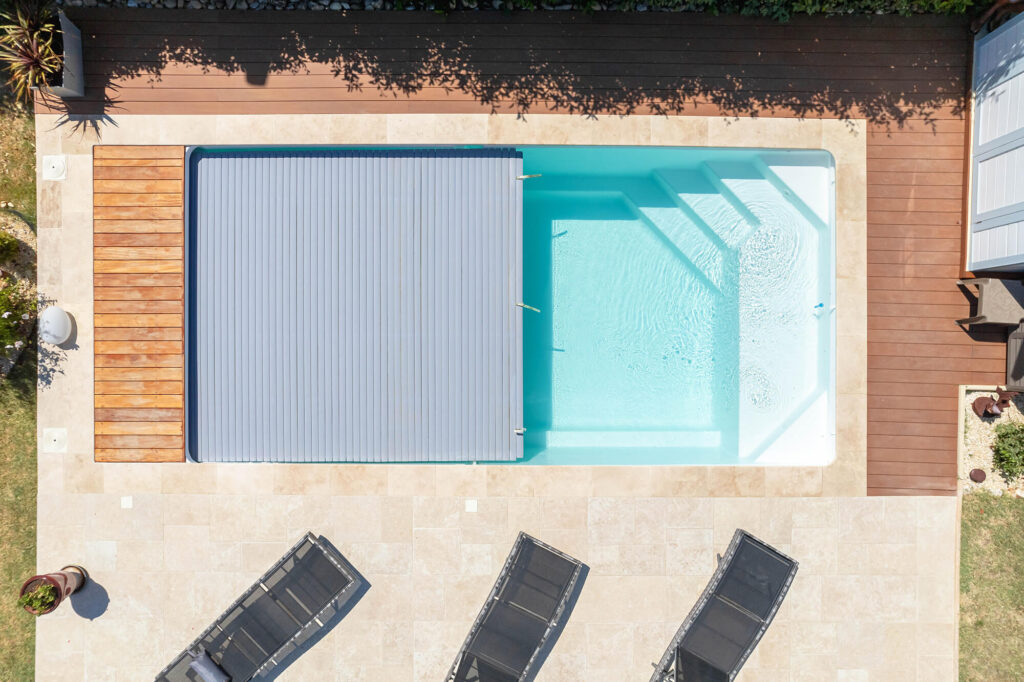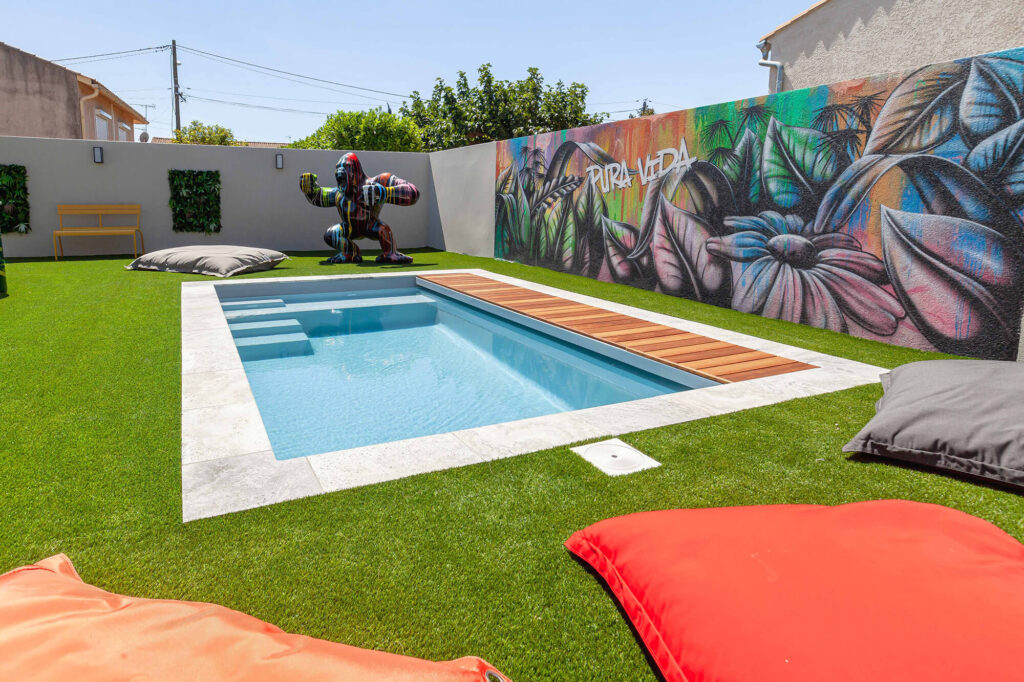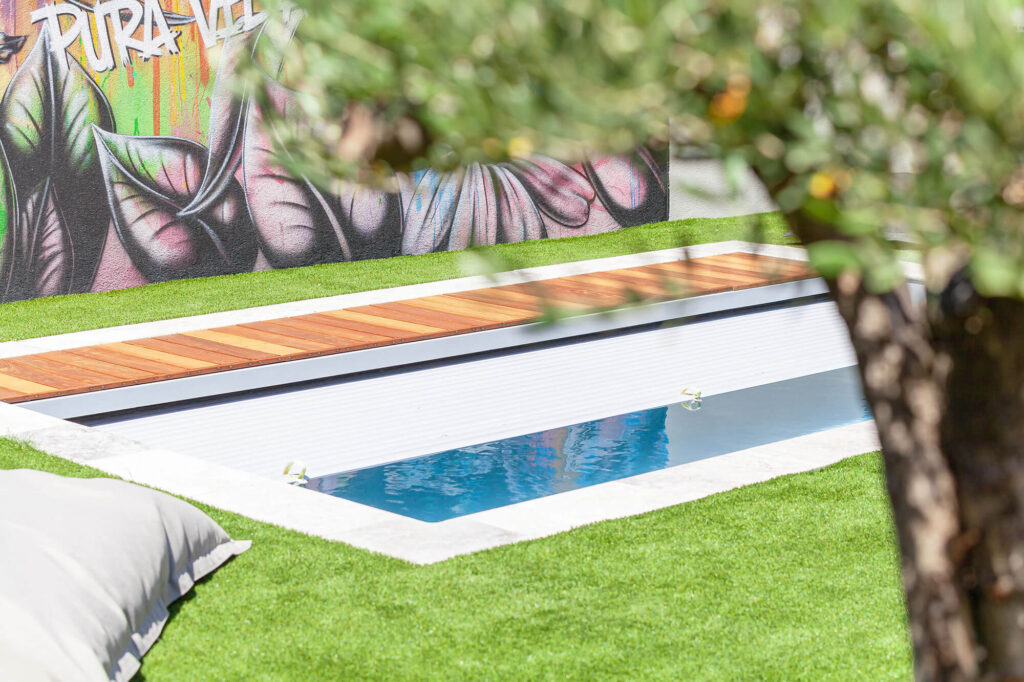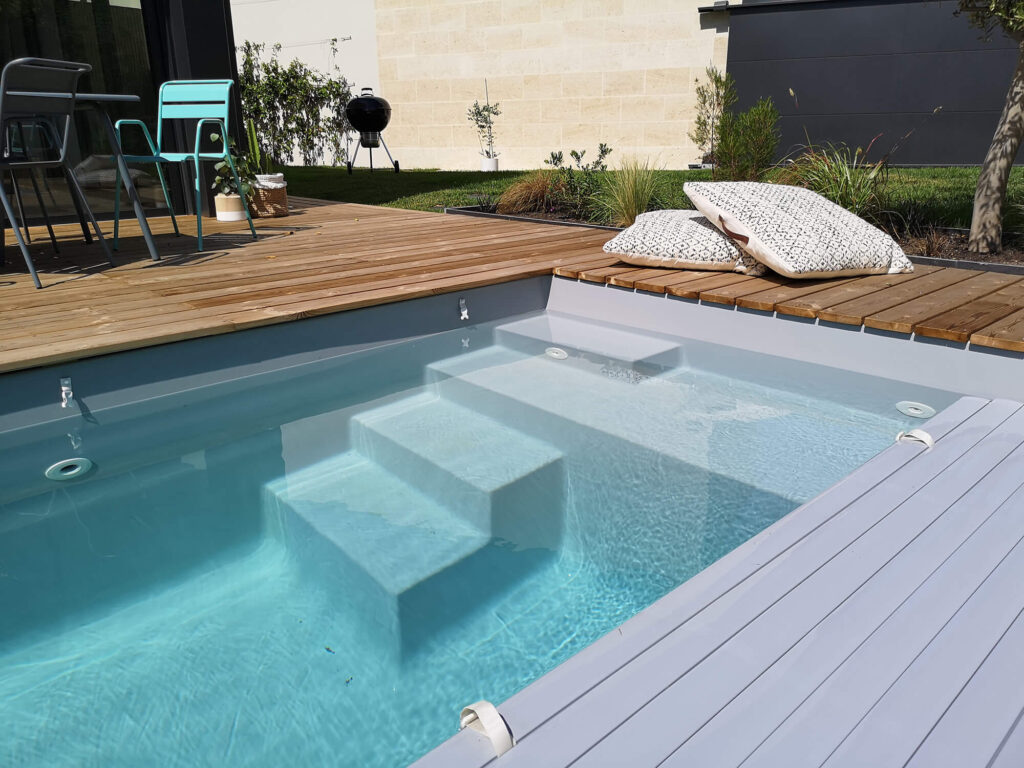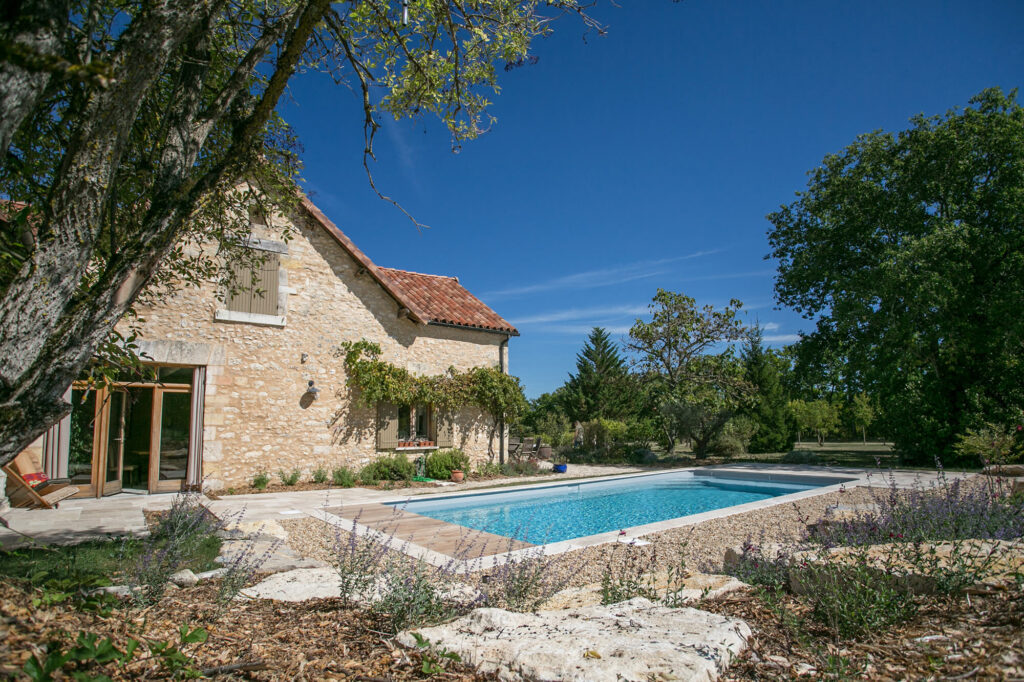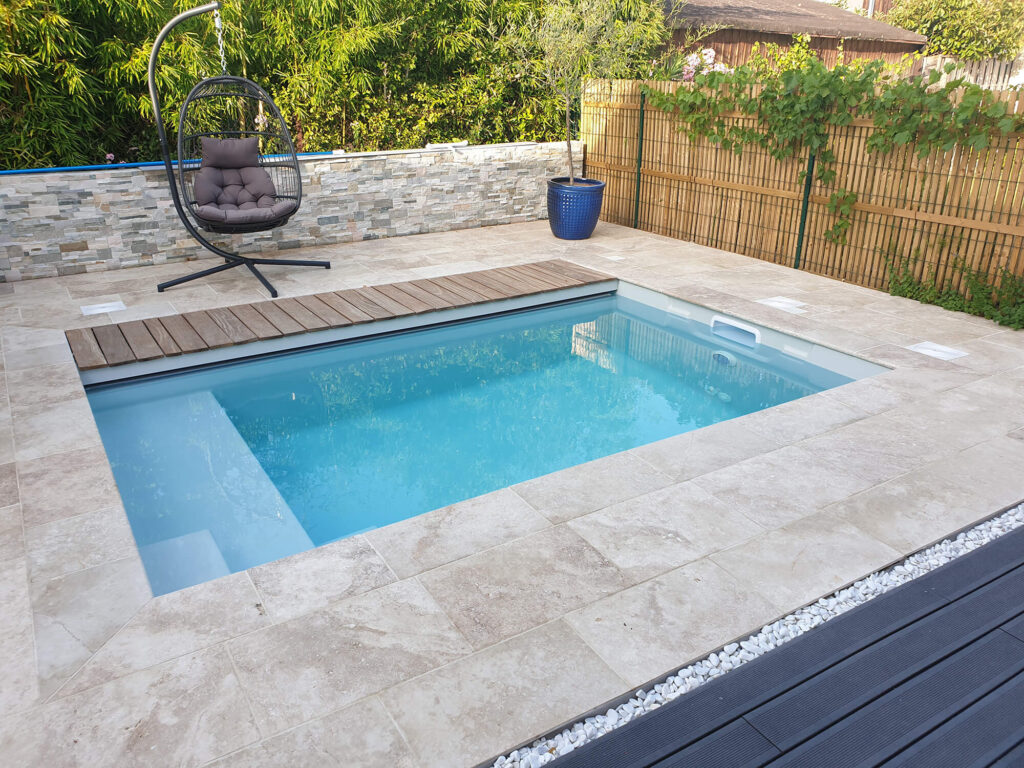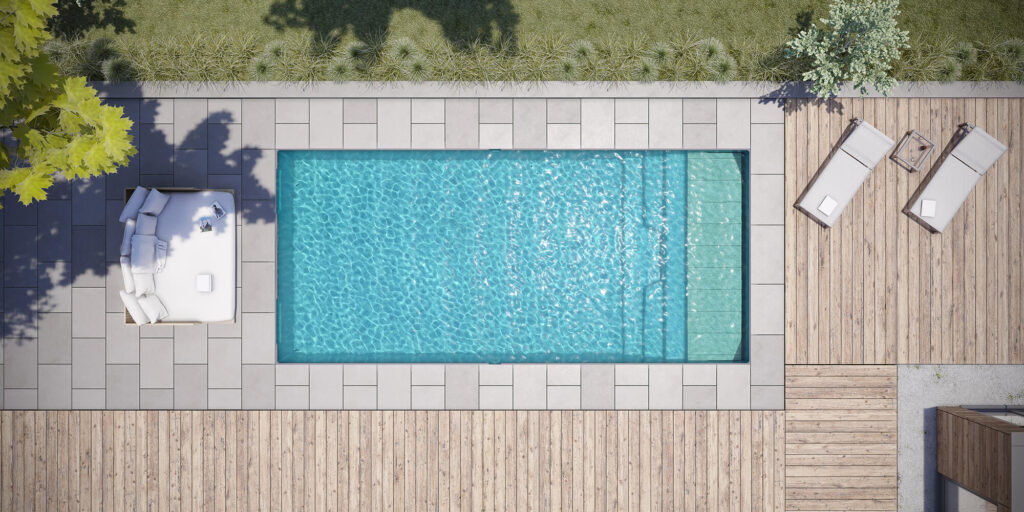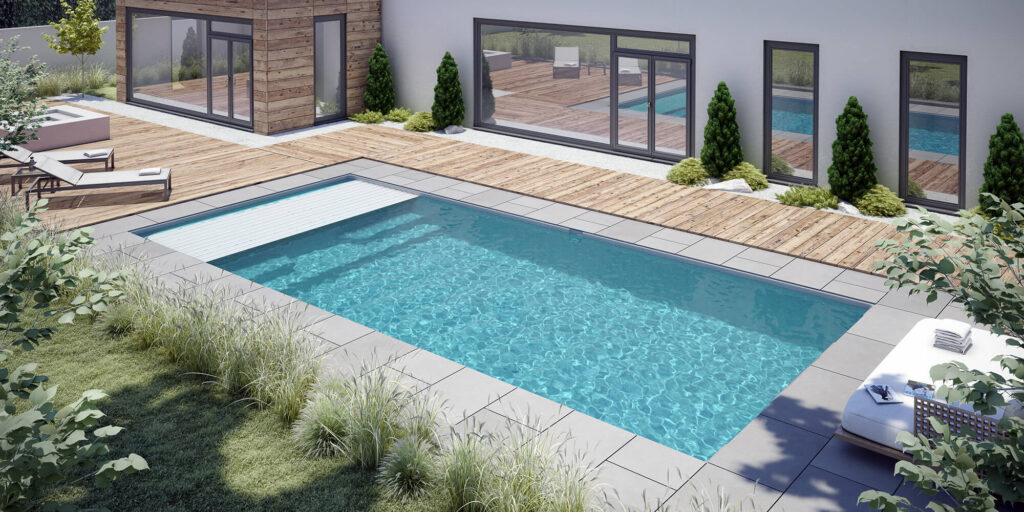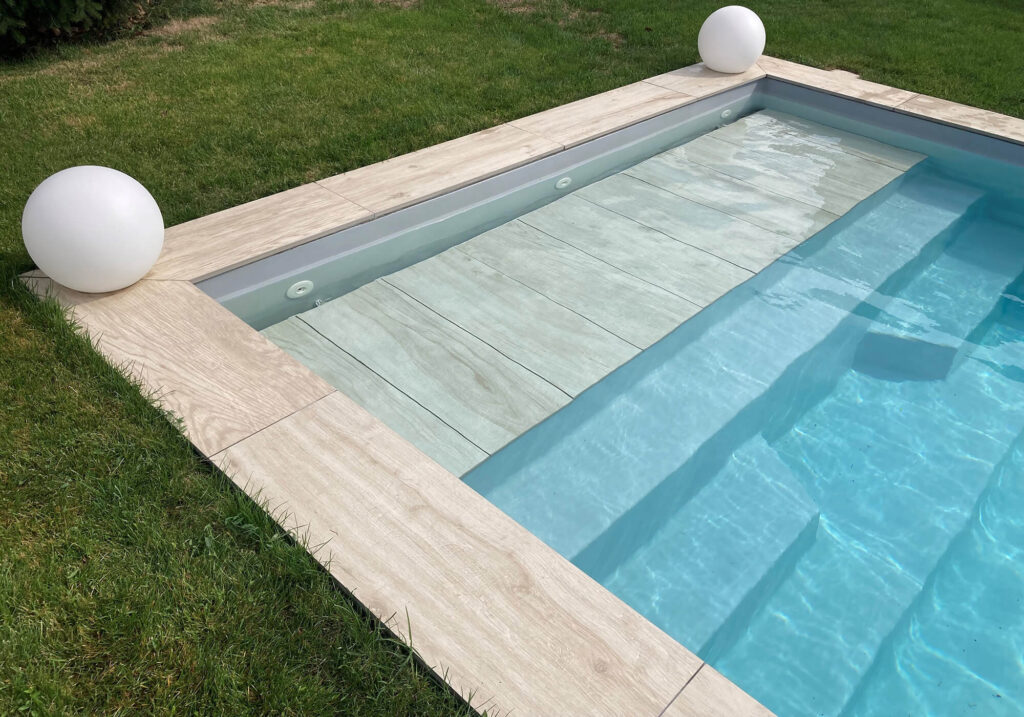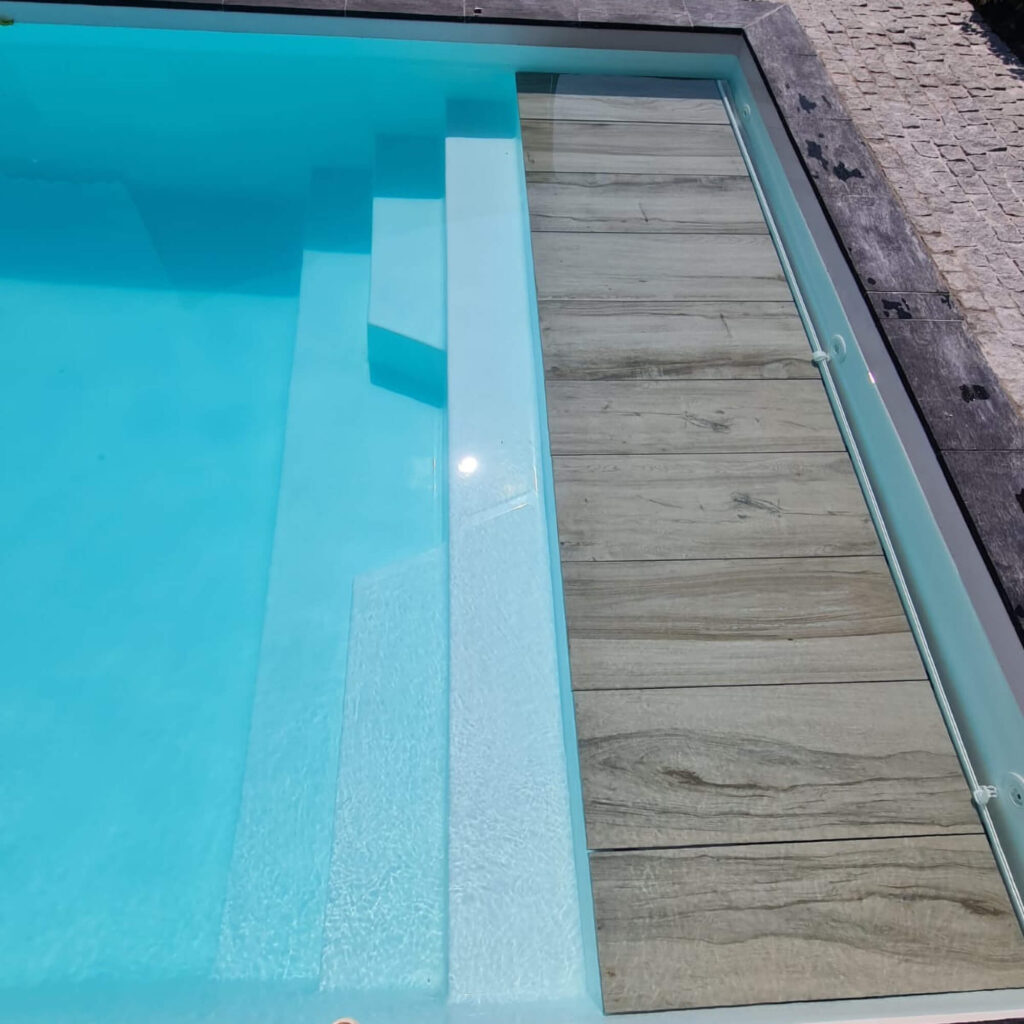L’entretien d’une piscine est une responsabilité importante pour tout propriétaire. Et pour cause, une piscine bien entretenue garantit non seulement une eau cristalline, mais aussi un environnement de baignade agréable pour tous.
Pour désinfecter l’eau de piscine, le chlore est couramment utilisé ; il prévient la prolifération d’algues, de bactéries et autres micro-organismes et évite que l’eau ne devienne verte. Cependant, un excès de chlore peut causer plusieurs problèmes au niveau de votre bassin.
Quels sont-ils ? Que faire lorsque la quantité de chlore est trop élevée ? Découvrez tous nos conseils sur le sujet sans plus tarder.
Pourquoi le taux de chlore de votre piscine est-il trop élevé ?
Plusieurs facteurs peuvent expliquer un excès de chlore dans votre piscine. Si vous avez récemment effectué un traitement choc, il est possible que le chlore atteigne des niveaux supérieurs à 10 ppm. Ce type de traitement est souvent utilisé pour clarifier une eau trouble ou éliminer les algues. Dans ce cas, vous devrez laisser le temps au traitement de faire son effet : l’oxydation des micro-organismes et l’exposition aux UV désintègrent progressivement le chlore, réduisant ainsi son niveau dans l’eau.
Un autre facteur possible est un réglage incorrect de votre chlorinateur ou électrolyseur. Si ces dispositifs sont programmés pour produire trop de chlore, ou si une quantité excessive de chlore a été ajoutée manuellement, le taux augmentera inévitablement.
Les conditions environnementales influent également sur le niveau de chlore. Par exemple, des températures plus basses, un ensoleillement réduit, et moins de baigneurs diminuent la demande en chlore. Dans ces conditions, il est nécessaire d’ajuster le traitement au chlore en conséquence, car l’eau de la piscine n’a pas besoin d’autant de chlore pour rester propre. Il est donc essentiel de vérifier régulièrement les niveaux de chlore et d’adapter les traitements en fonction des conditions actuelles pour garantir une qualité de l’eau optimale.
Les dommages potentiels d’un taux de chlore trop élevé
L’utilisation d’un dosage de chlore choc par m³ peut être nécessaire pour augmenter le taux de chlore de votre piscine. Cependant, une concentration excessive de chlore peut causer divers problèmes si elle n’est pas rapidement corrigée.
Pour les piscines et leurs équipements
Un taux de chlore élevé diminue le pH de l’eau, la rendant plus acide. Cette acidité est corrosive pour les surfaces de la piscine, comme le liner ou la coque polyester, ce qui peut réduire leur durée de vie.
Les équipements métalliques et en béton peuvent également être endommagés, entraînant une usure prématurée et des réparations coûteuses.
Pour les baigneurs
Un excès de chlore peut irriter les yeux, la peau et les voies respiratoires. De plus, un déséquilibre du pH, de l’alcalinité ou de la dureté de l’eau peut également causer des irritations.
Maintenir un équilibre optimal de ces paramètres permet d’assurer la sécurité et le confort des nageurs.
Pour les textiles
Comme l’eau de Javel, un excès de chlore peut décolorer et détériorer les maillots de bain, serviettes et autres textiles exposés à l’eau de la piscine, entraînant leur décoloration et vieillissement prématuré.
En résumé, un taux de chlore trop élevé peut causer des dommages importants aux infrastructures de la piscine traitée, nuire à la santé des baigneurs et affecter la durabilité des textiles. Il est donc essentiel de mesurer le taux de chlore régulièrement et d’ajuster les traitements pour éviter ces effets néfastes.
Comment baisser le chlore d’une piscine ?
J’ai mis trop de chlore choc dans ma piscine, et cela a causé plusieurs problèmes ? Pour y remédier, voici les étapes à suivre pour abaisser le taux de chlore :
1. Arrêter l’ajout de chlore :
Si votre taux de chlore est trop élevé après un traitement choc, la première étape consiste à arrêter immédiatement toute addition de chlore. Éteignez l’électrolyseur et retirez les galets de chlore des skimmers pour éviter toute nouvelle augmentation.
2. Laisser les UV du soleil agir naturellement :
Exposer l’eau de la piscine aux rayons UV du soleil est une méthode efficace pour réduire le taux de chlore. Les UV détruisent rapidement les molécules de chlore. En effet, une journée ensoleillée peut réduire jusqu’à 90% du chlore en seulement deux heures. Laissez la piscine découverte et assurez une bonne circulation de l’eau avec une filtration continue pour maximiser cet effet.
3. Renouveler l’eau de la piscine :
Une autre méthode consiste à vider partiellement la piscine et à la remplir avec de l’eau fraîche. Cela dilue la concentration de chlore, ainsi que les niveaux de pH et d’alcalinité. Après avoir remplacé une partie de l’eau, il est recommandé d’effectuer des analyses pour ajuster les niveaux chimiques nécessaires.
4. Appliquer un produit neutralisant le chlore :
Pour avoir un taux de chlore idéal, vous pouvez utiliser des neutralisants chimiques comme le thiosulfate de sodium. Ce produit neutralise le chlore et se dilue facilement dans l’eau. Il est important de suivre les instructions pour éviter une déchloration excessive, avec des doses recommandées généralement de 1 à 2,5 g par m³ d’eau.
5. Utiliser un stabilisant :
Un bon taux de stabilisant, tel que l’ acide cyanurique, protège le chlore des rayons UV du soleil. Cela aide à maintenir l’efficacité du chlore utilisé pour désinfecter l’eau de la piscine.
6. Prévenir les futurs excès de chlore :
Pour éviter une montée rapide du taux de chlore, utilisez des outils de surveillance comme des testeurs électroniques pour vérifier régulièrement les niveaux de chlore, de pH, d’alcalinité et de dureté de l’eau. Des doseurs automatiques, comme un électrolyseur au sel, permettent de diffuser le chlore de manière régulière et contrôlée. Passer à une piscine au sel peut également offrir une gestion plus stable du taux de chlore.
En suivant ces étapes, vous pouvez diminuer le taux de chlore dans votre piscine, garantissant ainsi une expérience de baignade agréable et sécurisée.
Configurez votre piscine en ligne Revenir à toute l'actualité